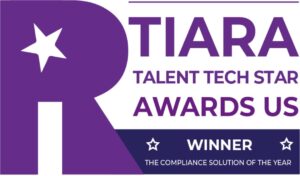An employee handbook is an important tool that helps give your organization a robust workforce structure. Employee handbooks describe critical things about the organization, such as company culture, mission, vision, and company policies.
Without a well-written and structured employee handbook, most of these things would be improperly defined, leading to several challenges for your HR team.
These are things that your employee handbook should clearly outline to ensure new hires are aware of what to expect at the company and help more experienced staff to understand ways of behaving and addressing issues within the organization.
Here’s a look into the employee handbook and the importance of having a well-described one.
What is an Employee Handbook?
An employee handbook is a document that gives employees a detailed overview of the company policies and other key procedures, benefits, and guidelines they should be aware of. Also known as the employee manual, it sets clear expectations for the employees, defines employees’ rights, and states your organization’s legal obligations to its workforce.
A well-written and structured employee handbook is essential to defend your organization against employee claims and lawsuits, such as harassment, wrongful termination, and discrimination.
The handbook also acts as an essential introduction to your organization for new hires, giving them insights into what is expected of them. They also get to understand your business’s mission and values.
Therefore, an employee handbook or manual ensures transparency and consistency across the organization while keeping you out of hot water if any legal HR issues arise.
When Should an HR Team Create an Employee Handbook?
Ideally, the HR team should proactively develop the employee handbook during the early stages of the company’s launch. Nevertheless, even if it hasn’t been created yet, it’s never too late to initiate the process.
Crafting an employee handbook is an ongoing endeavor rather than a one-time task. The handbook serves as a dynamic document that requires regular updates and maintenance. By consistently refining and updating it, you ensure that your business adheres to the latest state, federal, and local laws and that your policies are always relevant and effective.
The employee handbook plays a crucial role in supporting HR compliance within your organization. By implementing its guidelines, your HR team can mitigate potential risks that might otherwise lead to expensive lawsuits and legal actions. Hence, it serves as a vital tool in safeguarding the company’s interests and ensuring smooth operations.
The employee handbook is crucial to developing a positive company culture that will allow your organization to thrive. It helps create an environment where employees feel respected, engaged, and motivated, which will help them succeed in their roles.
It also helps ease the onboarding burden for new hires, who must learn several new policies and procedures within their first few days or weeks to get up to speed with the business’s operations and procedures.
Onboarding is one of the most overwhelming activities for new hires. There are so many onboarding activities that a new hire needs to accomplish so they can get fully up to speed with the business’s operations. Having an updated employee handbook makes the process much easier for them.
The Main Purposes of an Employee Handbook
Here are the top reasons your HR team should craft and update your employee handbook.
Communicates Company Expectations and Policies
Employees succeed when they know the company’s expectations about their roles. This clarity also helps the business thrive.
An employee handbook tailored to your organization should clearly outline company policies and indicate how employees are expected to perform and behave. The manual should reflect how you conduct business and provide a framework for workplace behavior.
The employee handbook should also provide a roadmap for how your business and HR team should treat employees, as well as how the employee should treat each other. Employees should be able to infer essential procedures and behaviors from the handbook, such as requesting time off, dressing appropriately, and refraining from drug and alcohol use during work hours.
Outlines Your Mission, Vision, and Values
Your company culture flows from your vision, mission, and values. They are your company’s bedrock standards and goals.
An employee handbook helps you hire employees who understand and embrace these values. Consequently, your company culture is upheld, and the business is more likely to succeed and operate efficiently.
Ensures Consistent Enforcement of Company Policies
Apart from outlining employee expectations, the employee handbook creates a framework that guides management and leadership within the business. This makes applying company policies easier, with transparency, and consistency, and ensures everyone is on the same page.
Without the handbook, each department will have a different operating procedure, potentially leading to management chaos and unequal employee treatment.
Showcases the Benefits Your Business Offers
The employee handbook communicates all your business’s benefits, such as health insurance, 401(k), vacations, and paid parental leave. Through the handbook, employees also learn about their eligibility for these benefits.
A robust benefits package allows you to retain the best and brightest talent. Therefore, it is essential that you communicate them in your handbook and consistently update them based on business and legal changes.
Helps Defend Against Employee Claims
Facing a lawsuit from current or former employees is inevitable for HR teams and employers. The employee handbook is one of the most useful documents your attorney can use to make a defense for you.
A compliant and thorough handbook will help show that your organization exercised “reasonable care” to the employee. It will also show that the employee had the opportunity to familiarize themselves with the policies, ask questions, and turn for help within the organization.
It will also prove that the employee agreed to the organization’s policies, rules, and procedures.
Ensures Compliance with State and Federal Laws
State and federal employment laws affect how you run your business. Your employee handbook communicates your various legal obligations and employees’ entitlements, and demonstrates your organization’s efforts toward compliance.
For instance, employees will want to understand their rights and obligations when requesting leave to serve on active duty through the Military Leave Policy outlined in the handbook. They should also find similar information for policies such as FMLA leave, state disability leaves, and other government mandates.
Have an Expert Guide Your HR Policies
Your employee handbook is the tool that will make managing the workforce in your organization much easier. Moreover, the employee manual will be an excellent reference for compliance and ensure your organization is not breaking local, federal, or state laws.
Contact VirgilHR today to learn how you can build a compliant handbook using innovative, easy-to-use technology, and what you must include in your employee handbook to stay compliant and updated.






